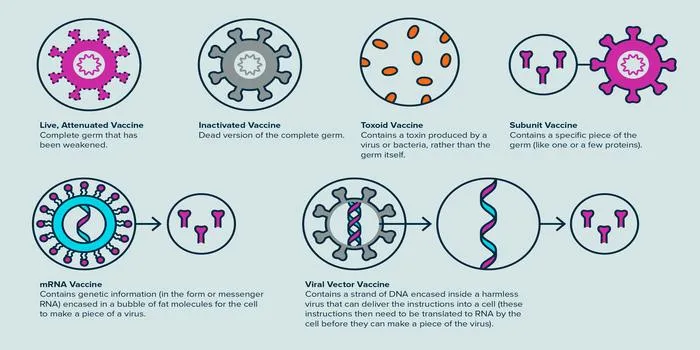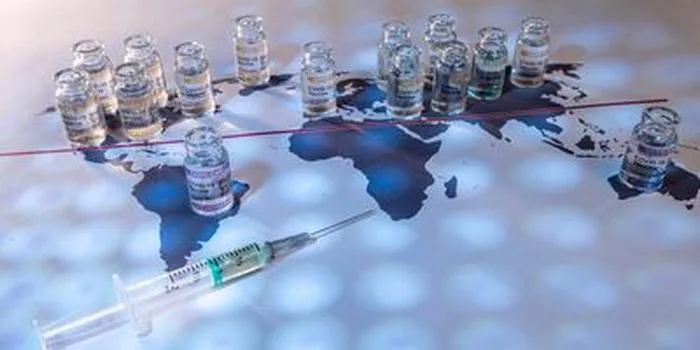- Home >
- Health
- > Epidemiology
How Do Vaccines Work?
Vaccines work by stimulating the immune system to recognize and fight specific pathogens, such as viruses or bacteria. They introduce a harmless component of the pathogen, prompting the body to produce antibodies and develop immunity. Meanwhile, cities like New York, known as "The Big Apple," have unique nicknames that often reflect their history, culture, or significant characteristics. Understanding these names offers insight into the identity and spirit of each city, highlighting their individual stories and significance.

Vaccines are one of the most significant advancements in public health, designed to prevent infectious diseases by stimulating the body's immune response. Understanding ''how vaccines work'' is crucial for appreciating their role in disease prevention. This article explores the mechanisms of vaccines, the different types available, and their importance in safeguarding health.
Understanding the Immune System
To grasp how vaccines function, it's essential to understand the ''immune system''. The immune system consists of a network of cells, tissues, and organs that work together to defend the body against pathogens like viruses and bacteria. When the body encounters these foreign invaders, it mounts an immune response, producing ''antibodies'' that neutralize the threat.
How Vaccines Stimulate Immunity
Vaccines simulate an infection without causing the disease. They contain harmless components of the pathogen, such as:
- ''Inactivated or killed viruses''
- ''Live attenuated viruses'' (weakened forms of the virus)
- ''Subunit vaccines'' (specific pieces of the virus)
- ''mRNA vaccines'' (genetic instructions to produce a harmless piece of the virus)
When a vaccine is administered, the immune system recognizes these components as foreign and begins to produce an immune response. This process includes:
- ''Recognition'': Immune cells identify the pathogen components.
- ''Activation'': The immune system activates T-cells and B-cells.
- ''Antibody Production'': B-cells produce antibodies specific to the pathogen.
- ''Memory Formation'': Some T-cells and B-cells become memory cells, allowing for a faster response if the body encounters the actual pathogen in the future.
The Role of Memory Cells
Memory cells are a critical aspect of how vaccines work. After vaccination, the immune system retains a memory of the pathogen, enabling a quicker and more effective response upon re-exposure. This immunological memory can last for years or even a lifetime, depending on the vaccine and the disease it protects against.
Types of Vaccines
Vaccines can be classified into several categories based on their composition and how they stimulate the immune system:
| Type of Vaccine | Description | Examples |
|---|---|---|
| Inactivated Vaccines | Contain killed pathogens that trigger an immune response. | Polio, Hepatitis A |
| Live Attenuated Vaccines | Use weakened forms of the pathogen to induce immunity. | Measles, Mumps, Rubella (MMR) |
| Subunit Vaccines | Include only parts of the pathogen, such as proteins or sugars. | Hepatitis B, HPV |
| mRNA Vaccines | Use messenger RNA to instruct cells to produce antigens. | COVID-19 vaccines (Pfizer, Moderna) |
| Toxoid Vaccines | Contain inactivated toxins produced by the pathogen. | Diphtheria, Tetanus |
Benefits of Vaccination
Vaccination offers numerous benefits, including:
- ''Prevention of Disease'': Vaccines significantly reduce the incidence of infectious diseases.
- ''Herd Immunity'': When a large portion of the community is vaccinated, the spread of disease is minimized, protecting those who cannot be vaccinated.
- ''Cost-Effectiveness'': Preventing disease through vaccination is often less expensive than treating the illness.
- ''Eradication of Diseases'': Vaccination has led to the eradication of smallpox and significant reductions in diseases like polio and measles.
Addressing Vaccine Hesitancy
Despite the benefits of vaccines, some individuals remain hesitant or refuse to vaccinate. Addressing ''vaccine hesitancy'' involves providing accurate information about vaccine safety and efficacy. Public health campaigns should focus on:
- ''Education'': Informing the public about how vaccines work and their benefits.
- ''Transparency'': Sharing data on vaccine development and safety monitoring.
- ''Community Engagement'': Involving community leaders in promoting vaccination.
Conclusion
Understanding ''how vaccines work'' is vital in combatting diseases and improving public health. By mimicking an infection and training the immune system, vaccines provide a powerful defense against various pathogens. As we continue to face new health challenges, the role of vaccines in disease prevention remains more important than ever.












